- Home
- C. S. Lewis
On Stories Page 5
On Stories Read online
Page 5
So again in All Hallows’ Eve the strange sufferings to which Betty is subjected disengage for us her quite possible, yet now seldom imagined, character of wholly undefended and incorruptible innocence. To put it in another way, I find that when I read her history the word victim, after so many years of commonplace usage, is restored in my mind to its ancient, sacred, and sacrificial dignity, and my vision of the everyday world proportionately sharpened.
That, indeed, is only one instance of a curious effect which Williams’s supposals often have. They render possible the creation of good characters. Good characters in fiction are the very devil. Not only because most authors have too little material to make them of, but because we as readers have a strong subconscious wish to find them incredible. Notice how cleverly Scott gets under our guard by making Jeanie Deans inferior to us in everything except her virtues. That gives us our sop: we are taken off our guard. In Williams we are similarly off our guard. We see his good people in strange circumstances and do not think much of calling them good. Only on later reflection do we discover what we have been surprised into accepting.
I will go back to that point in a moment. Meantime I must repeat the claim or the confession (whichever you call it) that this illumination of the ordinary world is only one half of a Williams story. The other half is what he tells us about a different world. To the strict Materialist who believes unshakeably that there is no such thing, I suppose this cannot be more than a curiosity or material for psychoanalysis. Frankly, Williams is not addressing such readers. But, of course, neither is he addressing only his co-religionists. Indeed, explicitly or exclusively Christian conceptions are not often put before us. What have we then? At the lowest, one man’s guess about unknowable things. But all who do not from the outset rule out the very possibility of those things will perhaps admit that one man may guess better than another. And if we think a man is guessing very well indeed we begin to doubt whether ‘guessing’ is the right word.
I would hesitate to claim that Williams was a mystic. If a mystic means one who follows the negative way by rejecting images, then he was, consciously and deliberately, the very reverse. The choice between the two ways, the legitimacy, the dignity, and the danger, of both, is one of his favourite themes. But I am convinced that both the content and the quality of his experience differed from mine and differed in ways which oblige me to say that he saw further, that he knew what I do not know. His writing, so to speak, brings me where I have never gone on my own sail or steam; and yet that strange place is so attached to realms we do know that I cannot believe it is mere dreamland.
It is a thing impossible to illustrate by short quotations, but I can point to passages where I have felt it in especial force. One comes in the last chapter of All Hallows’ Eve, where Lester, who has been, in the physical sense, dead for many days, looks up and discovers (I cannot explain this without telling the whole story) that a still more final separation is at hand. Then come the words ‘All, all was ending; this, after so many preludes, was certainly death. This was the most exquisite and pure joy of death. . . . Above her the sky every moment grew more high and empty; the rain fell from a source beyond all clouds.’
Another comes in the fourth chapter of the Descent into Hell, where the aged Margaret, on her death bed, feels herself to be at once a mountain and a traveller who climbs that mountain: and ‘Now she knew that only the smallest fragility of her being clung somewhere to the great height that was she and others and all the world under her separate kind, as she herself was part of all the other peaks.’ You may, of course, ask me how Williams should know. And I am not suggesting that he knows in one sense—that he is giving me factual details about the world beyond death or on the brink of death. What I am quite sure of is that he is describing something he knows which I should not have known unless he had described it; and something that matters.
But I am horribly afraid lest what I said earlier about his good characters should leave anyone under the impression that he was a moralist. The public has a distrust for moral books which is not wholly mistaken. Morality has spoiled literature often enough: we all remember what happened to some nineteenth-century novels. The truth is, it is very bad to reach the stage of thinking deeply and frequently about duty unless you are prepared to go a stage further. The Law, as St Paul first clearly explained, only takes you to the school gates. Morality exists to be transcended. We act from duty in the hope that someday we shall do the same acts freely and delightfully. It is one of the liberating qualities in Williams’s books that we are hardly ever on the merely moral level.
One little fact is significant; the unexpected extension he gives to the idea of courtesy. What others would regard as service or unselfishness he regards as good manners. That, taken by itself, might be a mere verbal trick: I mention it here only as a convenient shorthand symbol for the whole attitude. For courtesy can be frolic or ceremonial—or both—where unselfishness is lumpish and portentous. And that sublimation of merely ethical attitudes is at work through all his writing. His world may be fierce and perilous; but the sense of grandeur, of exuberance, even of carnival, the homestade and cavalleria, are never lost. It is a little like Spinoza’s hilaritas, if Spinoza could have progressed from his geometrical method to dance his philosophy. Even the chief fault of the earlier books—the perilous approach to flippancy in the dialogue—was a prentice attempt to express his own sense of gay adventure in the spiritual life. No doubt, some pious readers find Williams embarrasingly at ease in Sion: if so, have they forgotten that David danced before the Ark?
III
A TRIBUTE TO E. R. EDDISON
It is very rarely that a middle-aged man finds an author who gives him, what he knew so often in his teens and twenties, the sense of having opened a new door. One had thought those days were past. Eddison’s heroic romances disproved it. Here was a new literary species, a new rhetoric, a new climate of the imagination. Its effect is not evanescent, for the whole life and strength of a singularly massive and consistent personality lies behind it. Still less, however, is it mere self-expression, appealing only to those whose subjectivity resembles the author’s: admirers of Eddison differ in age and sex and include some (like myself) to whom his world is alien and even sinister. In a word, these books are works, first and foremost, of art. And they are irreplaceable. Nowhere else shall we meet this precise blend of hardness and luxury, of lawless speculation and sharply realised detail, of the cynical and the magnanimous. No author can be said to remind us of Eddison.
IV
ON THREE WAYS OF WRITING FOR CHILDREN
I think there are three ways in which those who write for children may approach their work; two good ways and one that is generally a bad way.
I came to know of the bad way quite recently and from two unconscious witnesses. One was a lady who sent me the MS of a story she had written in which a fairy placed at a child’s disposal a wonderful gadget. I say ‘gadget’ because it was not a magic ring or hat or cloak or any such traditional matter. It was a machine, a thing of taps and handles and buttons you could press. You could press one and get an ice cream, another and get a live puppy, and so forth. I had to tell the author honestly that I didn’t much care for that sort of thing. She replied, ‘No more do I, it bores me to distraction. But it is what the modern child wants.’ My other bit of evidence was this. In my own first story I had described at length what I thought a rather fine high tea given by a hospitable faun to the little girl who was my heroine. A man, who has children of his own, said, ‘Ah, I see how you got to that. If you want to please grown-up readers you give them sex, so you thought to yourself, “That won’t do for children, what shall I give them instead? I know! The little blighters like plenty of good eating.”’ In reality, however, I myself like eating and drinking. I put in what I would have liked to read when I was a child and what I still like reading now that I am in my fifties.
The lady in my first example, and the married man in my second, both conceived writ
ing for children as a special department of ‘giving the public what it wants’. Children are, of course, a special public and you find out what they want and give them that, however little you like it yourself.
The next way may seem at first to be very much the same, but I think the resemblance is superficial. This is the way of Lewis Carroll, Kenneth Grahame, and Tolkien. The printed story grows out of a story told to a particular child with the living voice and perhaps ex tempore. It resembles the first way because you are certainly trying to give that child what it wants. But then you are dealing with a concrete person, this child who, of course, differs from all other children. There is no question of ‘children’ conceived as a strange species whose habits you have ‘made up’ like an anthropologist or a commercial traveller. Nor, I suspect, would it be possible, thus face to face, to regale the child with things calculated to please it but regarded by yourself with indifference or contempt. The child, I am certain, would see through that. In any personal relation the two participants modify each other. You would become slightly different because you were talking to a child and the child would become slightly different because it was being talked to by an adult. A community, a composite personality, is created and out of that the story grows.
The third way, which is the only one I could ever use myself, consists in writing a children’s story because a children’s story is the best art-form for something you have to say: just as a composer might write a Dead March not because there was a public funeral in view but because certain musical ideas that had occurred to him went best into that form. This method could apply to other kinds of children’s literature besides stories. I have been told that Arthur Mee never met a child and never wished to: it was, from his point of view, a bit of luck that boys liked reading what he liked writing. This anecdote may be untrue in fact, but it illustrates my meaning.
Within the species ‘children’s story’ the sub-species which happened to suit me is the fantasy or (in a loose sense of that word) the fairy tale. There are, of course, other sub-species. E. Nesbit’s trilogy about the Bastable family is a very good specimen of another kind. It is a ‘children’s story’ in the sense that children can and do read it: but it is also the only form in which E. Nesbit could have given us so much of the humours of childhood. It is true that the Bastable children appear, successfully treated from the adult point of view, in one of her grown-up novels, but they appear only for a moment. I do not think she would have kept it up. Sentimentality is so apt to creep in if we write at length about children as seen by their elders. And the reality of childhood, as we all experienced it, creeps out. For we all remember that our childhood, as lived, was immeasurably different from what our elders saw. Hence Sir Michael Sadler, when I asked his opinion about a certain new experimental school, replied, ‘I never give an opinion on any of those experiments till the children have grown up and can tell us what really happened.’ Thus the Bastable trilogy, however improbable many of its episodes may be, provides even adults, in one sense, with more realistic reading about children than they could find in most books addressed to adults. But also, conversely, it enables the children who read it to do something much more mature than they realise. For the whole book is a character study of Oswald, an unconsciously satiric self-portrait, which every intelligent child can fully appreciate: but no child would sit down to read a character study in any other form. There is another way in which children’s stories mediate this psychological interest, but I will reserve that for later treatment.
In this short glance at the Bastable trilogy I think we have stumbled on a principle. Where the children’s story is simply the right form for what the author has to say, then of course readers who want to hear that will read the story or re-read it, at any age. I never met The Wind in the Willows or the Bastable books till I was in my late twenties, and I do not think I have enjoyed them any the less on that account. I am almost inclined to set it up as a canon that a children’s story which is enjoyed only by children is a bad children’s story. The good ones last. A waltz which you can like only when you are waltzing is a bad waltz.
This canon seems to me most obviously true of that particular type of children’s story which is dearest to my own taste, the fantasy or fairy tale. Now the modern critical world uses ‘adult’ as a term of approval. It is hostile to what it calls ‘nostalgia’ and contemptuous of what it calls ‘Peter Pantheism’. Hence a man who admits that dwarfs and giants and talking beasts and witches are still dear to him in his fifty-third year is now less likely to be praised for his perennial youth than scorned and pitied for arrested development. If I spend some little time defending myself against these charges, this is not so much because it matters greatly whether I am scorned and pitied as because the defence is germane to my whole view of the fairy tale and even of literature in general. My defence consists of three propositions.
(1) I reply with a tu quoque. Critics who treat adult as a term of approval, instead of as a merely descriptive term, cannot be adult themselves. To be concerned about being grown up, to admire the grown up because it is grown up, to blush at the suspicion of being childish; these things are the marks of childhood and adolescence. And in childhood and adolescence they are, in moderation, healthy symptoms. Young things ought to want to grow. But to carry on into middle life or even into early manhood this concern about being adult is a mark of really arrested development. When I was ten, I read fairy tales in secret and would have been ashamed if I had been found doing so. Now that I am fifty I read them openly. When I became a man I put away childish things, including the fear of childishness and the desire to be very grown up.
(2) The modern view seems to me to involve a false conception of growth. They accuse us of arrested development because we have not lost a taste we had in childhood. But surely arrested development consists not in refusing to lose old things but in failing to add new things? I now like hock, which I am sure I should not have liked as a child. But I still like lemon-squash. I call this growth or development because I have been enriched: where I formerly had only one pleasure, I now have two. But if I had to lose the taste for lemon-squash before I acquired the taste for hock, that would not be growth but simple change. I now enjoy Tolstoy and Jane Austen and Trollope as well as fairy tales and I call that growth: if I had had to lose the fairy tales in order to acquire the novelists, I would not say that I had grown but only that I had changed. A tree grows because it adds rings: a train doesn’t grow by leaving one station behind and puffing on to the next. In reality, the case is stronger and more complicated than this. I think my growth is just as apparent when I now read the fairy tales as when I read the novelists, for I now enjoy the fairy tales better than I did in childhood: being now able to put more in, of course I get more out. But I do not here stress that point. Even if it were merely a taste for grown-up literature added to an unchanged taste for children’s literature, addition would still be entitled to the name ‘growth’, and the process of merely dropping one parcel when you pick up another would not. It is, of course, true that the process of growing does, incidentally and unfortunately, involve some more losses. But that is not the essence of growth, certainly not what makes growth admirable or desirable. If it were, if to drop parcels and to leave stations behind were the essence and virtue of growth, why should we stop at the adult? Why should not senile be equally a term of approval? Why are we not to be congratulated on losing our teeth and hair? Some critics seem to confuse growth with the cost of growth and also to wish to make that cost far higher than, in nature, it need be.
(3) The whole association of fairy tale and fantasy with childhood is local and accidental. I hope everyone has read Tolkien’s essay on fairy tales, which is perhaps the most important contribution to the subject that anyone has yet made. If so, you will know already that, in most places and times, the fairy tale has not been specially made for, nor exclusively enjoyed by, children. It has gravitated to the nursery when it became unfashionable in literary circles, just
as unfashionable furniture gravitated to the nursery in Victorian houses. In fact, many children do not like this kind of book, just as many children do not like horsehair sofas: and many adults do like it, just as many adults like rocking chairs. And those who do like it, whether young or old, probably like it for the same reason. And none of us can say with any certainty what that reason is. The two theories which are most often in my mind are those of Tolkien and of Jung.
According to Tolkien1 the appeal of the fairy story lies in the fact that man there most fully exercises his function as a ‘subcreator’; not, as they love to say now, making a ‘comment upon life’ but making, so far as possible, a subordinate world of his own. Since, in Tolkien’s view, this is one of man’s proper functions, delight naturally arises whenever it is successfully performed. For Jung, fairy tale liberates Archetypes which dwell in the collective unconscious, and when we read a good fairy tale we are obeying the old precept ‘Know thyself’. I would venture to add to this my own theory, not indeed of the Kind as a whole but of one feature in it: I mean, the presence of beings other than human which yet behave, in varying degrees, humanly: the giants and dwarfs and talking beasts. I believe these to be at least (for they may have many other sources of power and beauty) an admirable hieroglyphic which conveys psychology, types of character, more briefly than novelistic presentation and to readers whom novelistic presentation could not yet reach. Consider Mr Badger in The Wind in the Willows—that extraordinary amalgam of high rank, coarse manners, gruffness, shyness, and goodness. The child who has once met Mr Badger has ever afterwards, in its bones, a knowledge of humanity and of English social history which it could not get in any other way.
Of course as all children’s literature is not fantastic, so all fantastic books need not be children’s books. It is still possible, even in an age so ferociously anti-romantic as our own, to write fantastic stories for adults: though you will usually need to have made a name in some more fashionable kind of literature before anyone will publish them. But there may be an author who at a particular moment finds not only fantasy but fantasy-for-children the exactly right form for what he wants to say. The distinction is a fine one. His fantasies for children and his fantasies for adults will have very much more in common with one another than either has with the ordinary novel or with what is sometimes called ‘the novel of child life’. Indeed the same readers will probably read both his fantastic ‘juveniles’ and his fantastic stories for adults. For I need not remind such an audience as this that the neat sorting-out of books into age-groups, so dear to publishers, has only a very sketchy relation with the habits of any real readers. Those of us who are blamed when old for reading childish books were blamed when children for reading books too old for us. No reader worth his salt trots along in obedience to a time-table. The distinction, then, is a fine one: and I am not quite sure what made me, in a particular year of my life, feel that not only a fairy tale, but a fairy tale addressed to children, was exactly what I must write—or burst. Partly, I think, that this form permits, or compels you to leave out things I wanted to leave out. It compels you to throw all the force of the book into what was done and said. It checks what a kind, but discerning critic called ‘the expository demon’ in me. It also imposes certain very fruitful necessities about length.

 The Lion, the Witch, and the Wardrobe
The Lion, the Witch, and the Wardrobe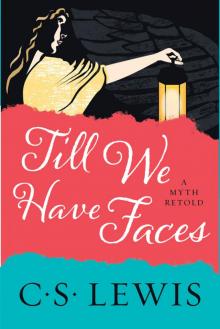 Till We Have Faces
Till We Have Faces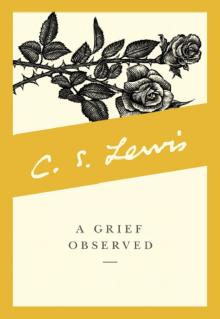 A Grief Observed
A Grief Observed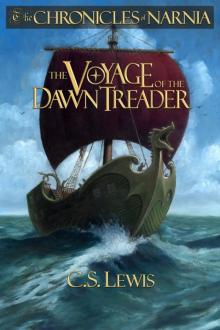 The Voyage of the Dawn Treader
The Voyage of the Dawn Treader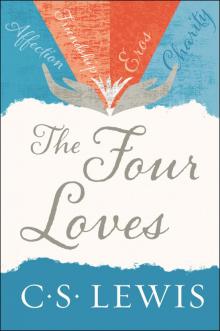 The Four Loves
The Four Loves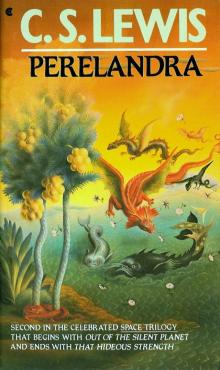 Perelandra
Perelandra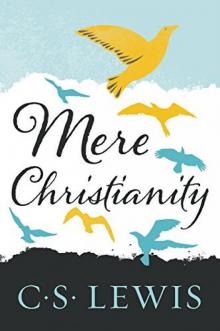 Mere Christianity
Mere Christianity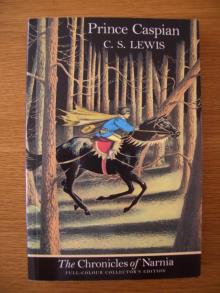 Prince Caspian
Prince Caspian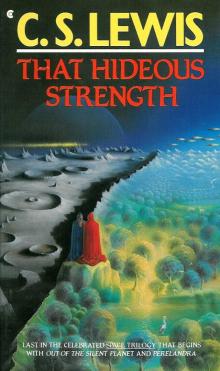 That Hideous Strength
That Hideous Strength The Magicians Nephew
The Magicians Nephew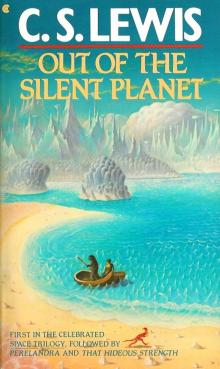 Out of the Silent Planet
Out of the Silent Planet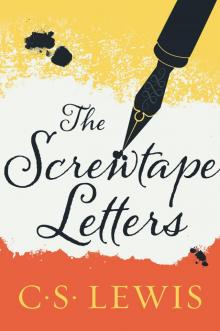 The Screwtape Letters
The Screwtape Letters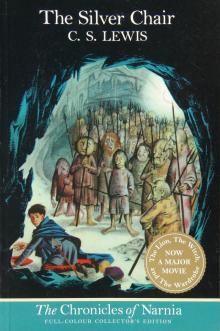 The Silver Chair
The Silver Chair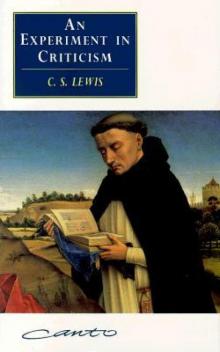 An Experiment in Criticism
An Experiment in Criticism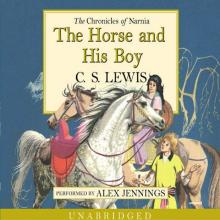 The Horse and His Boy
The Horse and His Boy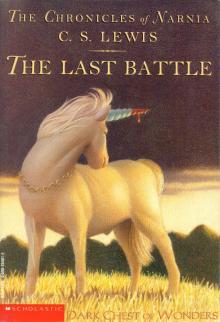 The Last Battle
The Last Battle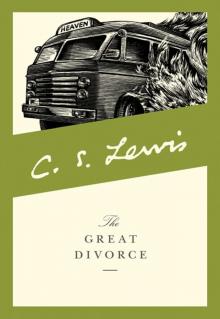 The Great Divorce
The Great Divorce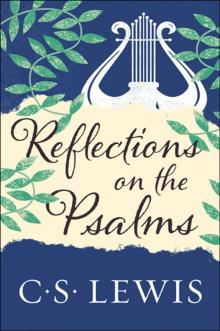 Reflections on the Psalms
Reflections on the Psalms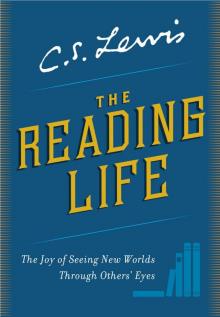 The Reading Life
The Reading Life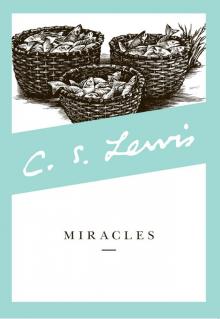 Miracles
Miracles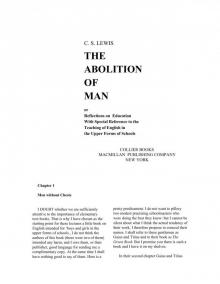 Lewis new
Lewis new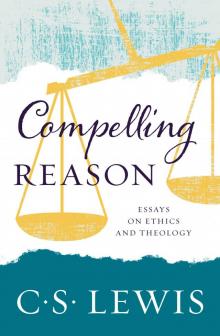 Compelling Reason
Compelling Reason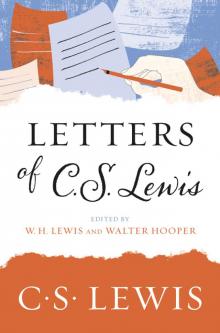 Letters of C. S. Lewis
Letters of C. S. Lewis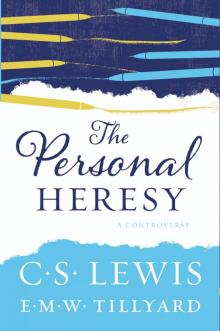 The Personal Heresy
The Personal Heresy The Lion, The Witch And The Wardrobe
The Lion, The Witch And The Wardrobe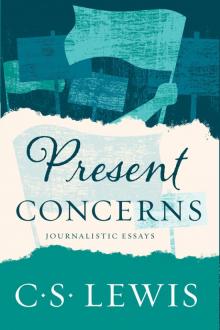 Present Concerns
Present Concerns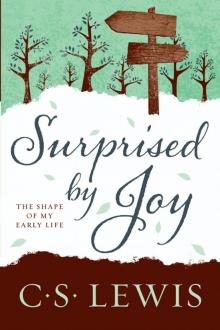 Surprised by Joy
Surprised by Joy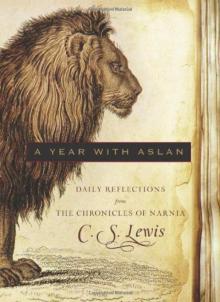 A Year with Aslan: Daily Reflections from The Chronicles of Narnia
A Year with Aslan: Daily Reflections from The Chronicles of Narnia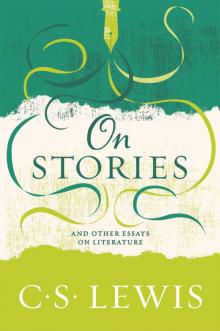 On Stories
On Stories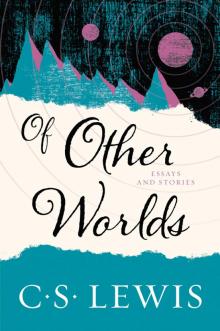 Of Other Worlds
Of Other Worlds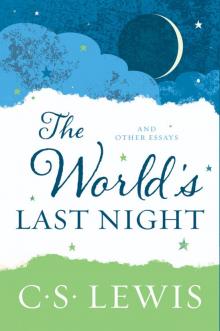 The World's Last Night
The World's Last Night The Discarded Image
The Discarded Image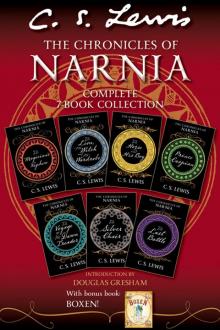 The Chronicles of Narnia Complete 7-Book Collection with Bonus Book
The Chronicles of Narnia Complete 7-Book Collection with Bonus Book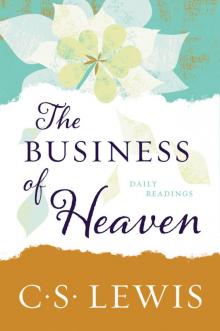 The Business of Heaven
The Business of Heaven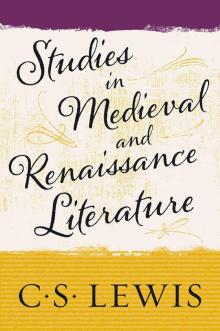 Studies in Medieval and Renaissance Literature
Studies in Medieval and Renaissance Literature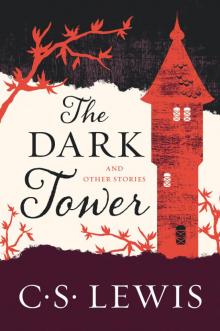 The Dark Tower
The Dark Tower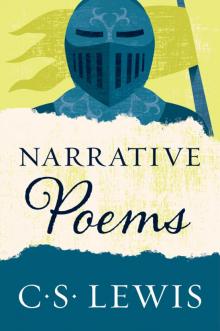 Narrative Poems
Narrative Poems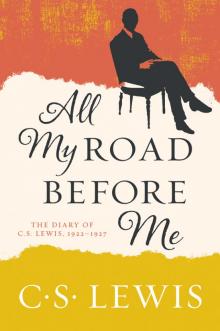 All My Road Before Me
All My Road Before Me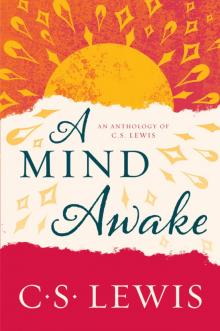 A Mind Awake
A Mind Awake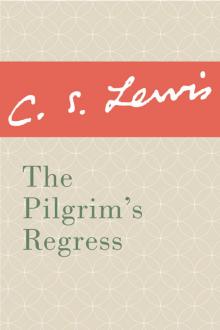 The Pilgrim's Regress
The Pilgrim's Regress